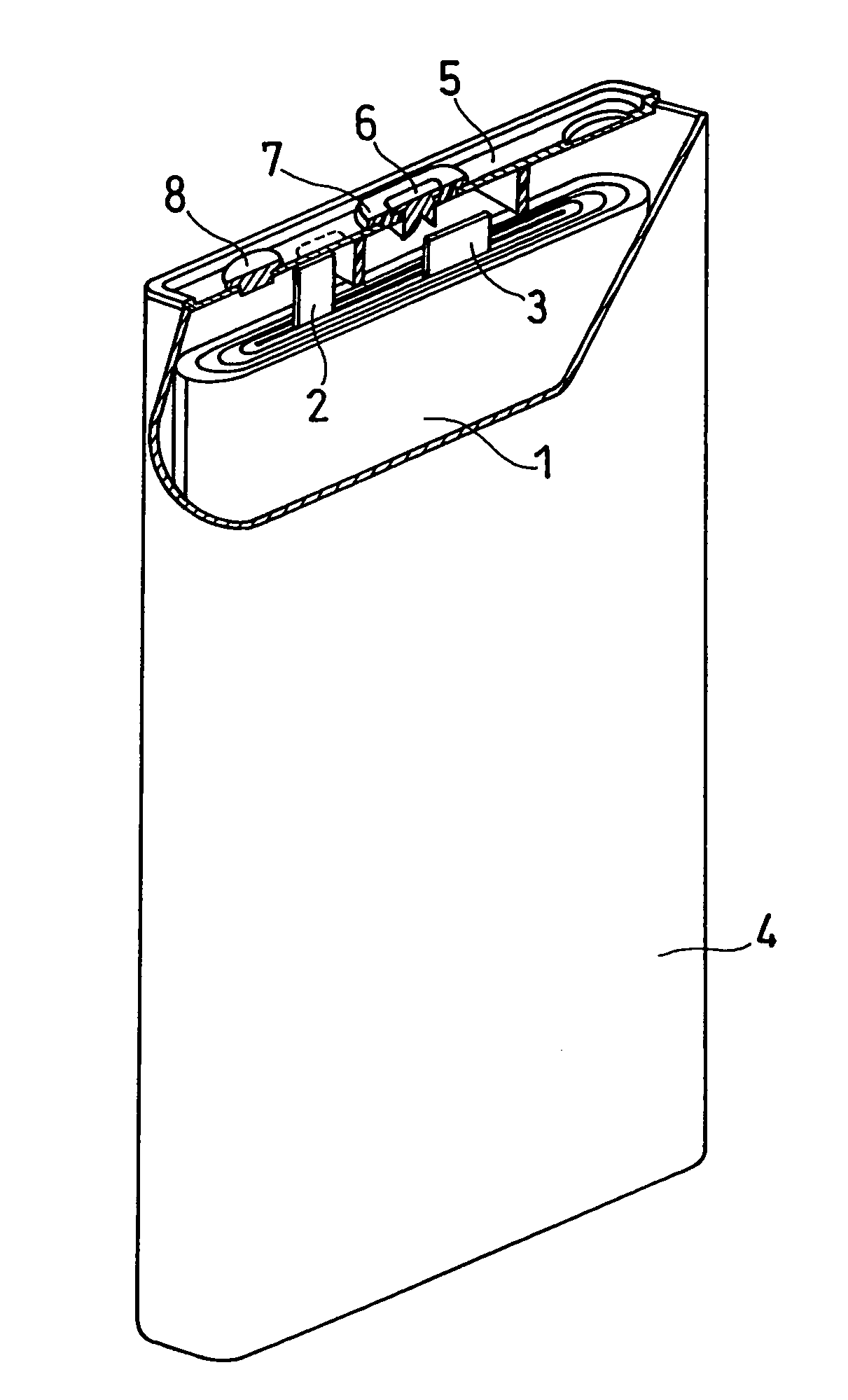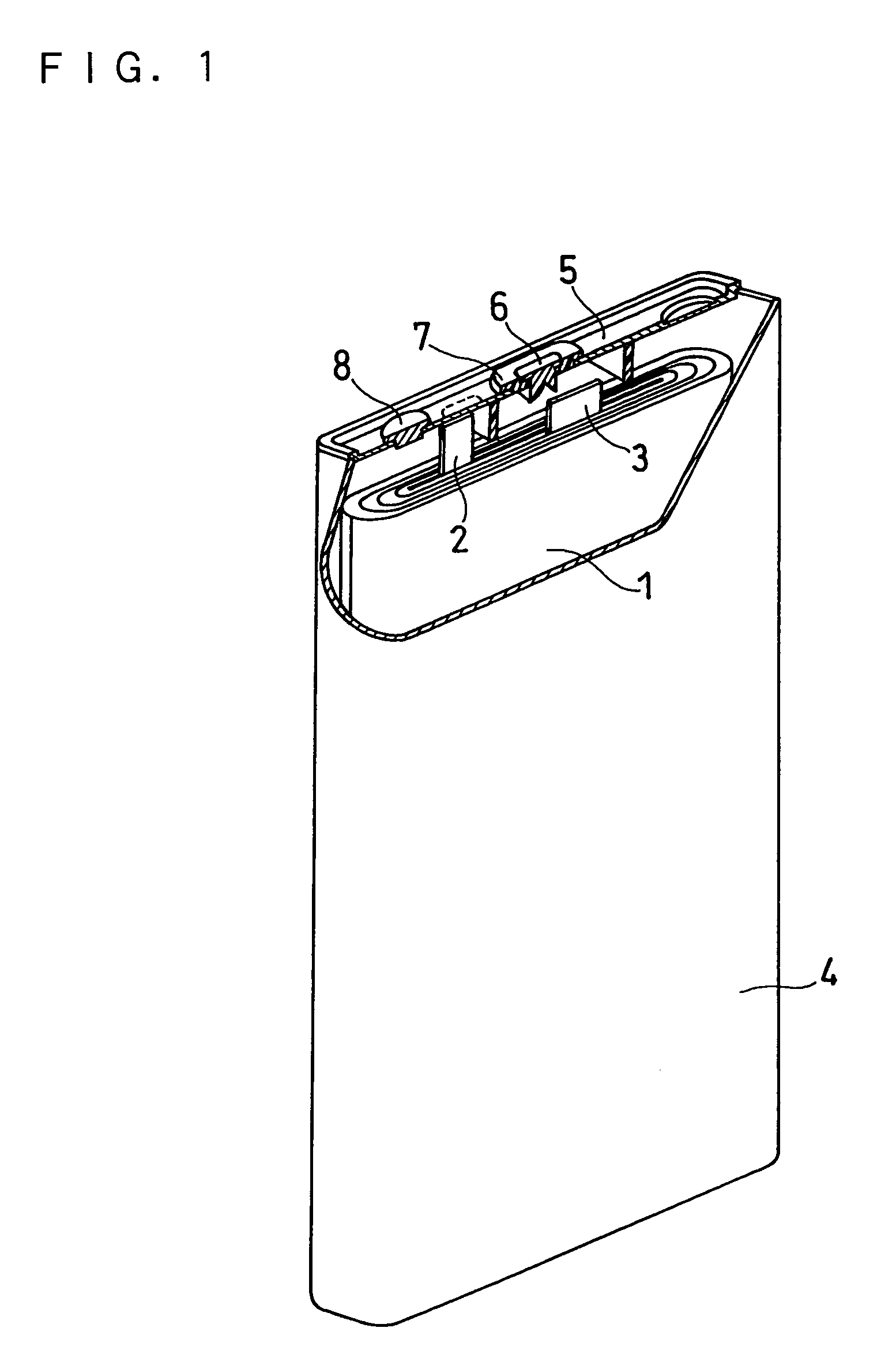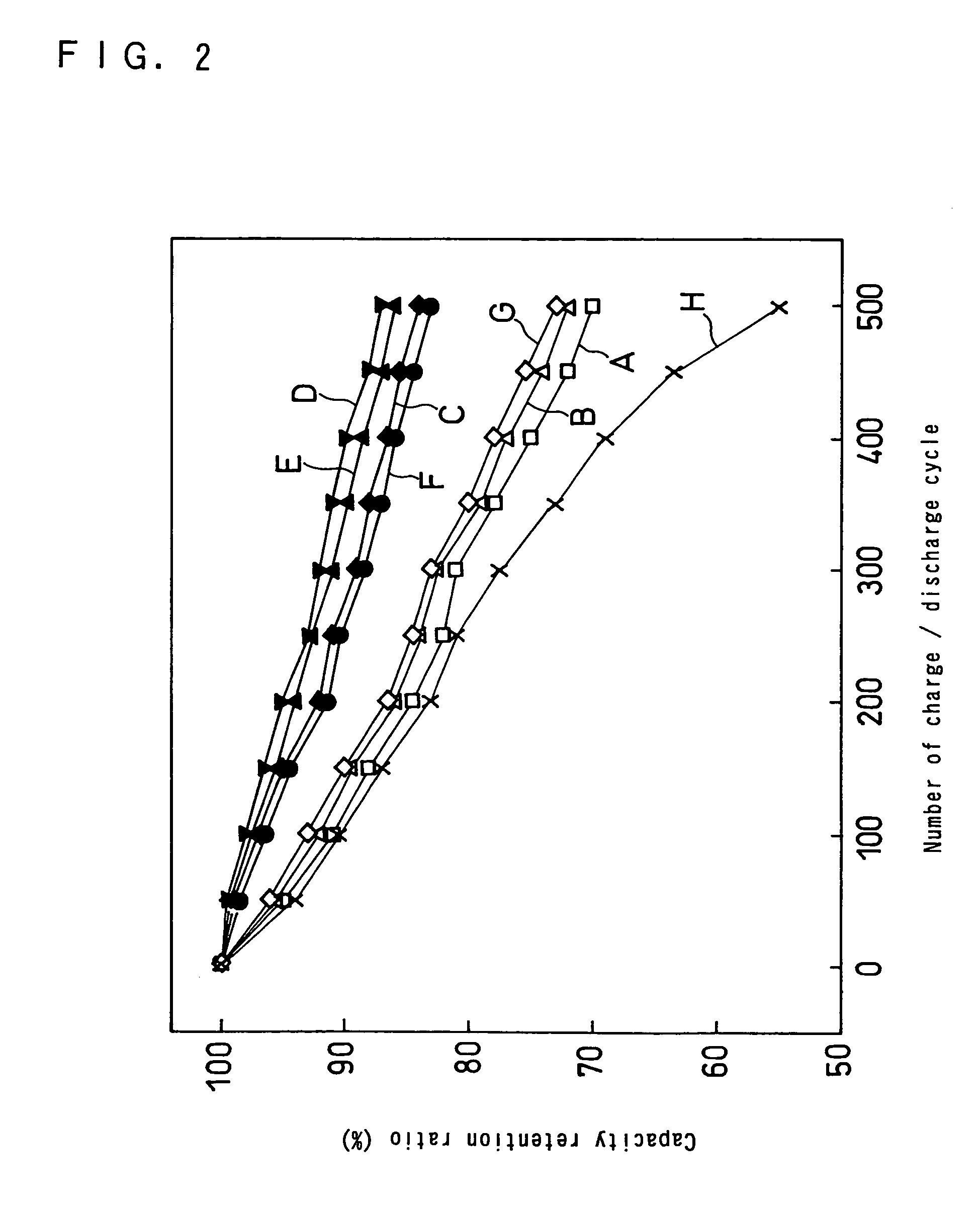Lithium-ion rechargeable battery with negative electrode material mixture comprising graphite and carbon nano-tubes
- Summary
- Abstract
- Description
- Claims
- Application Information
AI Technical Summary
Benefits of technology
Problems solved by technology
Method used
Image
Examples
example 1
(i) Production of Negative Electrode
[0054]As the main active material of the negative electrode, covered natural graphite particles obtained by the following procedure were used.
[0055]First, raw ore of natural graphite produced in Sri Lanka was ground with a mill into flake natural graphite with an average particle size D50 of 21 μm, washed with hydrofluoric acid for removal of impurity (ash), and then dried. The resultant flake natural graphite particles were transformed into a spherical shape by means of the hybridization system, in which shock or shearing force was applied to the particle surface under high-speed revolution, and also air-classified.
[0056]100 parts by weight of the obtained spherical natural graphite particles were kneaded by a mixer with 5 parts by weight of petroleum pitch in a liquid state at room temperature. The resultant mixture was heated in a baking furnace at 1300° C., and the pitch which adhered to the graphite particle surface was carbonized, and then c...
example 2
[0110]The density of the material mixture layer was studied as follows.
[0111]Herein used was the negative electrode carbon material “d” (covered natural graphite:carbon nano-tubes=100:5), which had exhibited the most excellent characteristic in Example 1. 100 parts by weight of the negative electrode carbon material “d” was added with 100 parts by weight of a 1-wt %-carboxymethyl cellulose (CMC) aqueous solution and an aqueous dispersion of styrene butadiene rubber (SBR) as a binder, and then kneaded well to prepare a negative electrode material mixture paste. Herein, an amount of the SBR added was 2 parts by weight per 100 parts by weight of the negative electrode carbon material “d”.
[0112]The obtained negative electrode material mixture paste was applied onto each face of a copper foil (thickness: 10 μm) with a coating machine to have a certain thickness, and then dried with hot air at 100° C., to form a negative electrode material mixture layer. Thereafter, the negative electrode...
example 3
[0117]The average fiber diameter and the average fiber length of the carbon nano-tubes were studied as follows.
[0118]By a heat CVD method in which production conditions were changed, multi-wall carbon nano-tubes (CNTa to CNTe) with high crystallinity, having different average fiber diameters and different average fiber lengths, were produced. Those carbon nano-tubes were analyzed by observing the TEM images and the SEM images thereof, to confirm that all the carbon nano-tubes had a multi-wall structure. The obtained average fiber diameter and average fiber length of each of the carbon nano-tubes are shown in Table 6.
[0119]
TABLE 6Average fiberCarbon nano-tubesAverage fiber diameter (nm)length (μm)CNTa50.5CNTb100.5CNTc51CNTd101CNTe302
[0120]In the same conditions as in the case of the negative electrode A in Example 1 except that CNTa to CNTe were used as the carbon nano-tubes and that an amount of the carbon nano-tubes per 100 parts by weight of the covered natural graphite was 5 part...
PUM
 Login to View More
Login to View More Abstract
Description
Claims
Application Information
 Login to View More
Login to View More - R&D
- Intellectual Property
- Life Sciences
- Materials
- Tech Scout
- Unparalleled Data Quality
- Higher Quality Content
- 60% Fewer Hallucinations
Browse by: Latest US Patents, China's latest patents, Technical Efficacy Thesaurus, Application Domain, Technology Topic, Popular Technical Reports.
© 2025 PatSnap. All rights reserved.Legal|Privacy policy|Modern Slavery Act Transparency Statement|Sitemap|About US| Contact US: help@patsnap.com



